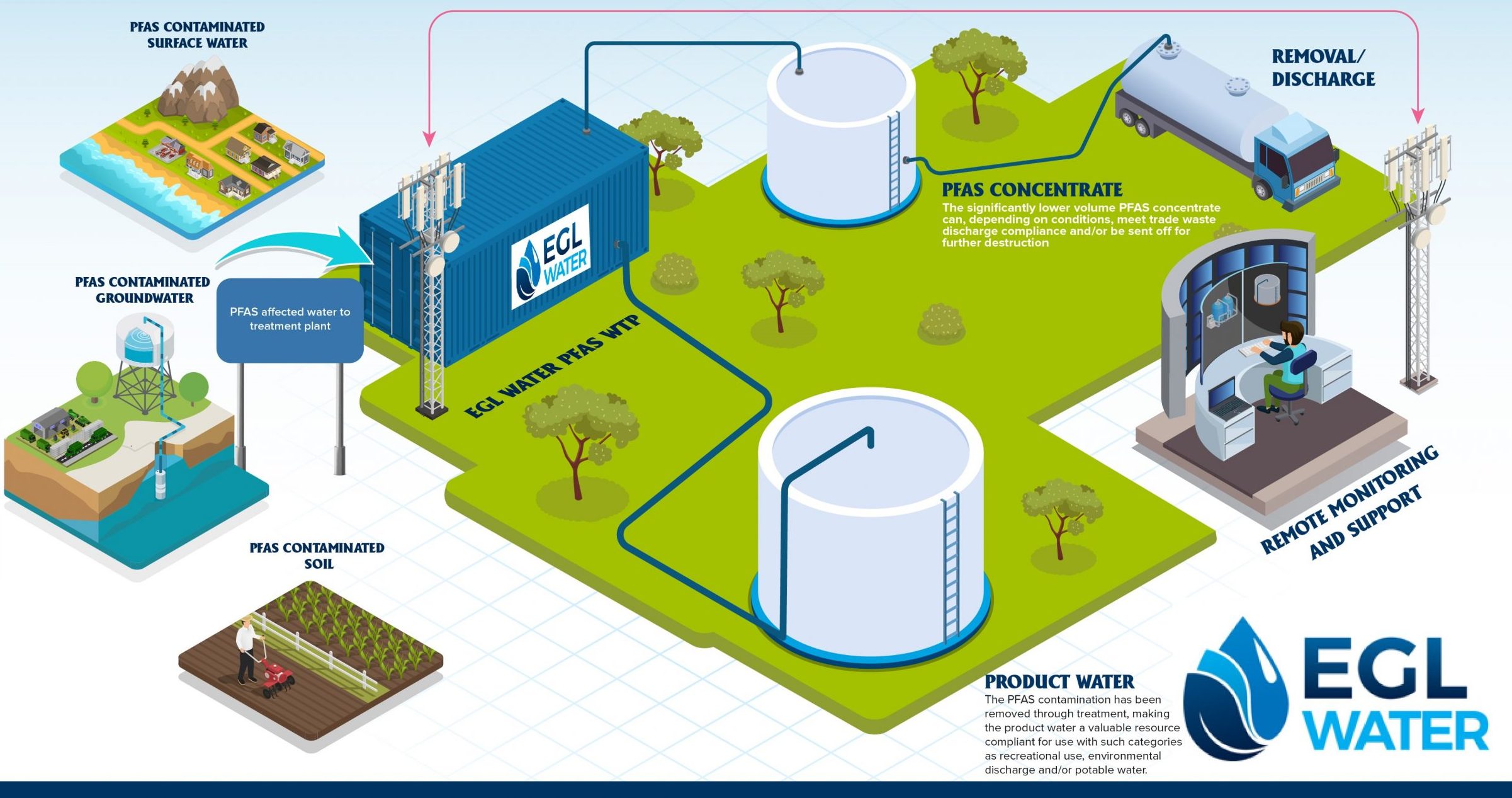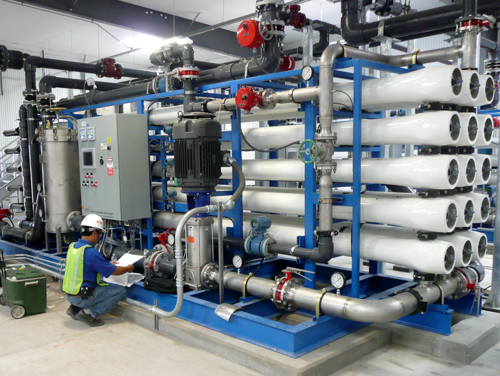Why PFAS Treatment Is Crucial for Eliminating Harmful Chemical Exposure
Why PFAS Treatment Is Crucial for Eliminating Harmful Chemical Exposure
Blog Article
Advanced Methods for Effective PFAS Contamination Elimination
The consistent difficulty of PFAS contamination necessitates the exploration of advanced removal methods that can successfully resolve these unsafe compounds. Ingenious technologies, such as advanced oxidation procedures and various adsorption techniques, have become promising options in mitigating PFAS from influenced environments. Furthermore, the role of regulative structures in forming these modern technologies can not be ignored, as they determine the pace and direction of removal efforts. As we examine these advanced methods, it ends up being vital to evaluate their practical applications and the wider implications for environmental wellness and plan.
Understanding PFAS Qualities
Although per- and polyfluoroalkyl substances (PFAS) have actually been extensively utilized in various commercial and consumer products because of their distinct homes, their determination in the setting positions substantial obstacles to public health and wellness and safety and security. PFAS are a group of synthetic chemicals identified by a carbon-fluorine bond, among the best chemical bonds recognized, which contributes to their extraordinary stability and resistance to deterioration. This security allows PFAS to build up in the atmosphere and living organisms, causing possible adverse health and wellness results.
These exact same homes add to their ecological determination, as PFAS do not easily break down via natural processes. Recognizing the chemical residential or commercial properties of PFAS is necessary for creating efficient strategies to take care of and alleviate their ecological effect.
Ingenious Removal Technologies
The perseverance of PFAS in the setting has actually stimulated the growth of innovative remediation modern technologies focused on efficiently getting rid of these impurities from impacted ecosystems. Amongst the most encouraging approaches are innovative oxidation procedures (AOPs), which utilize powerful oxidants to damage down PFAS compounds right into less damaging substances. AOPs can be customized to target specific PFAS frameworks, enhancing their effectiveness.
Another arising innovation is using adsorption media, such as turned on carbon and ion exchange resins, which can selectively capture PFAS from contaminated water. These materials have shown substantial elimination efficiencies, although periodic replacement and regrowth are necessary to maintain performance.
Membrane layer purification strategies, including reverse osmosis and nanofiltration, are additionally obtaining traction in PFAS remediation. These methods can successfully divide PFAS from water, providing a viable option for dealing with contaminated resources. In addition, thermal treatment methods, such as incineration, can break down PFAS right into safe results, though they call for careful monitoring to manage emissions.
Collectively, these innovative remediation modern technologies represent significant improvements in the recurring fight against PFAS contamination, offering various approaches to restore afflicted settings and safeguard public health and wellness.

Bioremediation Techniques
Bioremediation methods provide an appealing method to dealing with PFAS contamination by using the all-natural capacities of bacteria to weaken these consistent compounds (m270 waste management). This method includes making use of bacteria, fungi, and other germs that can metabolize or transform PFAS you can try these out materials into less dangerous by-products
Current improvements in molecular biology and environmental microbiology have actually boosted our understanding of microbial neighborhoods and their possible duties in PFAS deterioration. Scientists are proactively checking out specific stress of germs, such as Pseudomonas and Bacillus, which have actually demonstrated the capacity to break down particular PFAS substances.
Sitting bioremediation methods, where microbes are stimulated directly in contaminated settings, can be specifically efficient. This approach typically entails the application of nutrients or electron benefactors to promote microbial development and activity. Furthermore, ex lover situ techniques, such as bioreactors, enable regulated problems that can maximize deterioration rates.
Regardless of the promise of bioremediation, difficulties remain, consisting of the intricate nature of PFAS substances and the need for substantial area screening - m270 waste management. Continued study and development will certainly be essential to improve these strategies and assess their performance in varied ecological contexts
Adsorption and Filtration Methods
Addressing PFAS contamination typically includes using adsorption and purification methods, which are created to remove these persistent chemicals from water and soil. Among the numerous strategies, turned on carbon adsorption is extensively used because of its high area and porosity, enabling efficient trapping of PFAS molecules. Granular triggered carbon (GAC) systems are particularly preferred for treating big quantities of polluted water, while powdered triggered carbon (SPECIAL-INTEREST GROUP) can be utilized for smaller-scale applications.
Ion exchange resins additionally show pledge in PFAS removal, operating by trading PFAS ions with less damaging ions in like it the water. This method has shown performance in focusing PFAS substances, promoting their subsequent elimination. In addition, membrane purification strategies, such as reverse osmosis and nanofiltration, run by utilizing semi-permeable membranes to different PFAS from water, properly decreasing their focus.
While these methods are efficient, they need to be very carefully selected based upon the certain PFAS substances present and the ecological context. Constant advancements in materials science and design are causing the growth of novel adsorbents and filtration systems that boost removal efficiencies and minimize operational expenses, consequently improving overall remediation efforts.
Regulatory and Plan Factors To Consider
Exactly how can efficient regulatory frameworks improve the management of PFAS contamination? Comprehensive policies are essential to make certain a worked with and robust response to the difficulties postured by per- and polyfluoroalkyl materials (PFAS) Rules can develop clear guidelines for tracking, reporting, and remediating PFAS-contaminated sites, cultivating responsibility among sectors and public entities. (m270 waste management)

Additionally, economic incentives and gives can be incorporated into plans to encourage the adoption of innovative removal modern technologies. Policymakers need to also focus on research study and development, making certain that arising approaches for PFAS elimination are confirmed and applied successfully.
Moreover, public understanding and involvement are essential elements of any regulatory approach, encouraging areas to advocate for their wellness and security. Ultimately, a well-structured regulatory setting will not just improve the administration of PFAS contamination however additionally promote sustainable techniques that protect future generations.
Final Thought
In summary, the intricacy of PFAS contamination requires the fostering of advanced removal methods. Innovative technologies such as innovative oxidation processes, adsorption strategies, and membrane filtration have shown significant efficacy in getting our website rid of these persistent substances from contaminated water resources. Furthermore, governing structures must evolve to sustain the execution of these innovations, making certain safe and efficient management of PFAS pollutants. Proceeded r & d in this area continue to be critical to dealing with the challenges positioned by PFAS contamination.
Report this page